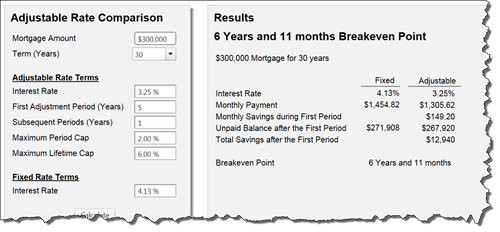Depends If You Can Afford It
Affordability, stability and flexibility are the three reasons homebuyers overwhelmingly choose a 30-year term. The payments are lower, easier to qualify for the mortgage and they can always make additional principal contributions.
However, for those who can afford a higher payment and commit to the 15-year term, there are three additional reasons: lower mortgage interest rate, build equity faster and retire the debt sooner.
The 30-year, fixed-rate mortgage is the loan of choice for first-time buyers who are more likely to use a minimum down payment and are concerned with affordable payments. For a more experienced buyer who doesn't mind and can qualify making larger payments, there are some advantages.
Consider a $200,000 mortgage at 30 year and 15-year terms with recent mortgage rates at 4.2% and 3.31% respectively. The payment is $433.15 less on the 30-year term but the interest being charged is higher. The total interest paid by the borrower if each of the loans was retired would be almost three times more for the 30-year term.
Let's look at a $300,000 mortgage with 4.41% being quoted on the 30-year and 3.84% on the 15-year. The property taxes and insurance would be the same on either loan. The interest rate is a little over a half a percent lower on the 15-year loan, but it also has a $691.03 higher principal and interest payment due to the shorter term.
The principal contribution on the first payment of the 30-year loan is $401.56 and it is $1,235.09 on the 15-year loan. The mortgage is being reduced by $833.53 more which exceeds the increased payment on the 15-year by $142.50. Interestingly, over three times more is being paid toward the principal.
Some people might suggest getting a 30-year loan and then, making the payments as if they were on a 15-year loan. That would certainly accelerate amortization and save interest. The real challenge is the discipline to make the payments on a consistent basis if you don't have to. Many experts cite that one of the benefits of homeownership is a forced savings that occurs due to the amortization that is not necessarily done by renters.
Use this 30-year vs. 15-year financial app to compare mortgages in your price range. A 15-year mortgage will be approximately half a percent cheaper in rate. You can also check current rates at FreddieMac.com.
 In September, the Federal Reserve raised interest rates for the third time in 2018 and they're expected to go up one more time this year and three times next year. If you have a Home Equity Line of Credit, HELOC, you're paying more to use that money and it is going to become more expensive.
In September, the Federal Reserve raised interest rates for the third time in 2018 and they're expected to go up one more time this year and three times next year. If you have a Home Equity Line of Credit, HELOC, you're paying more to use that money and it is going to become more expensive.




